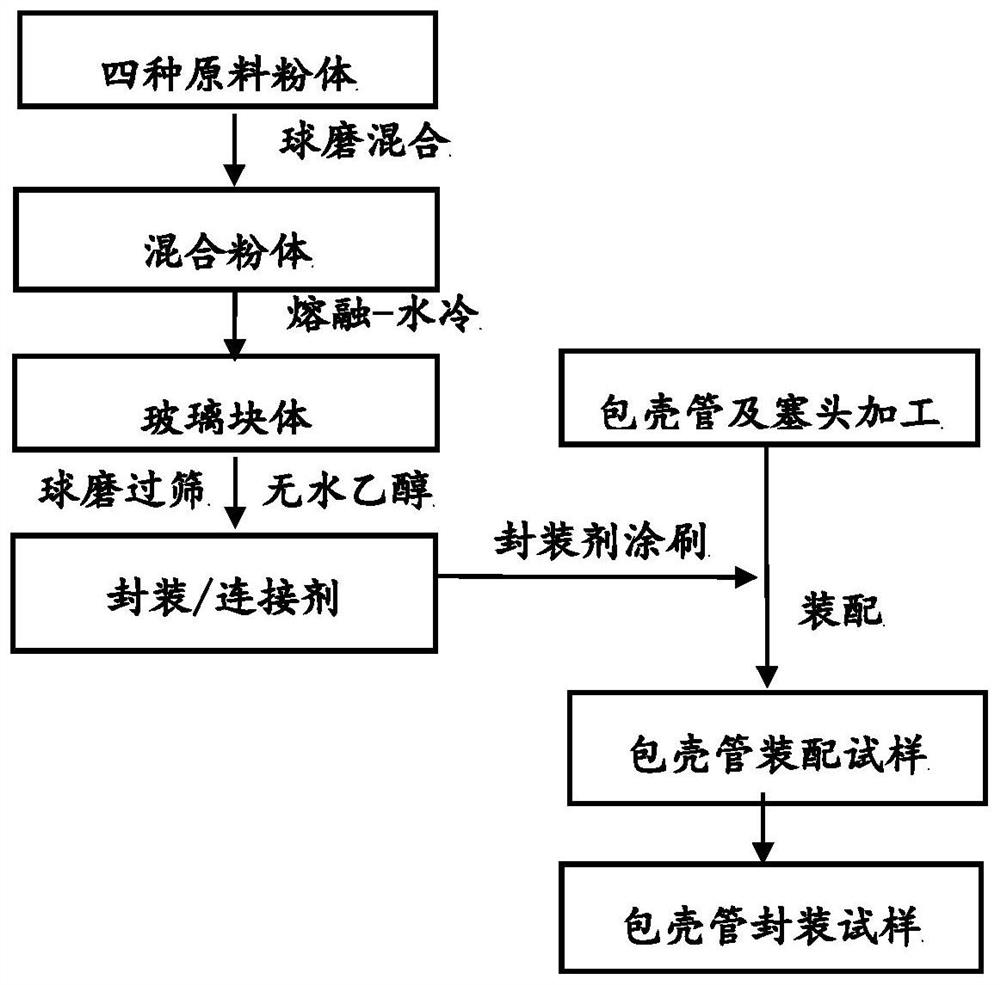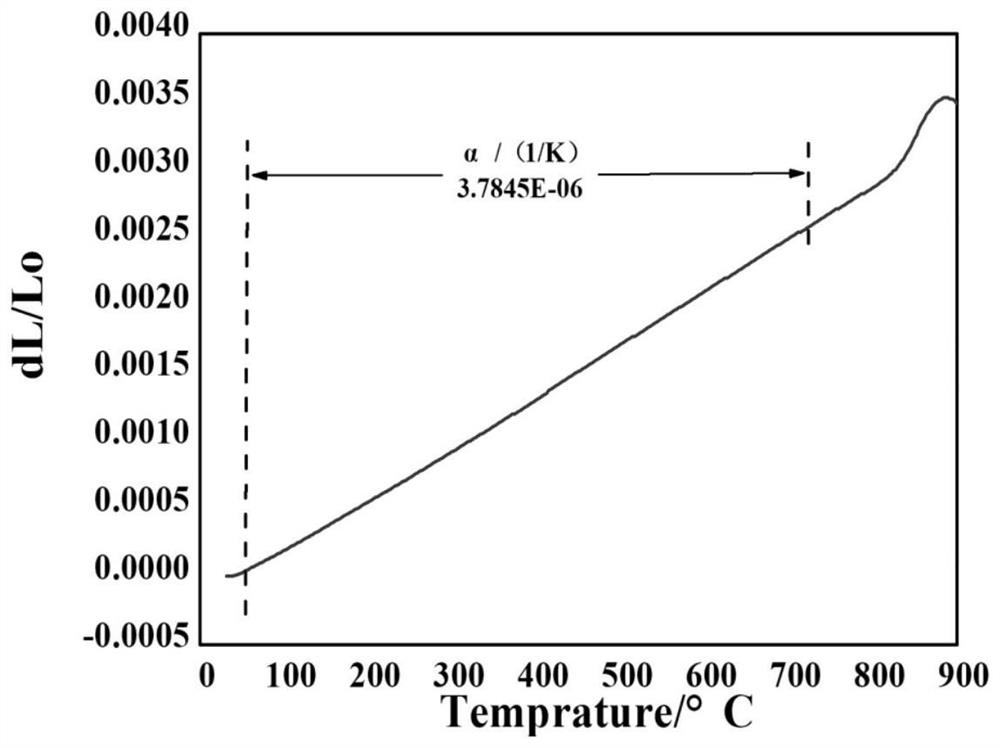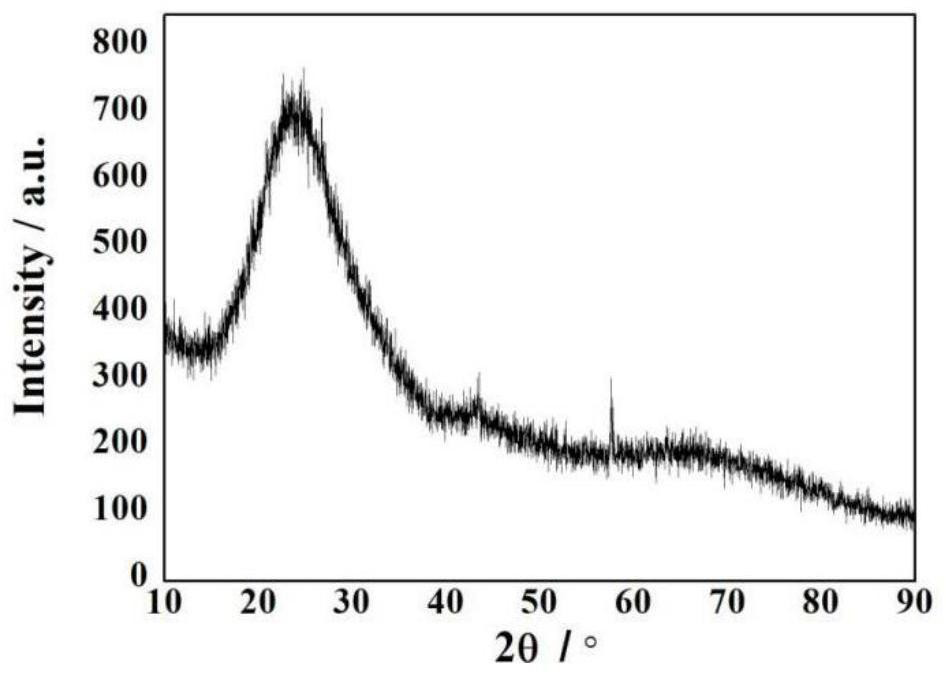sic f /sic nuclear cladding tube port cao-mgo-al 2 o 3 -sio 2 Glass encapsulation method
A glass encapsulation and cladding tube technology, which is applied in nuclear power generation, greenhouse gas reduction, fuel elements, etc., can solve the problem of high connection temperature, difficulty in meeting the packaging requirements of SiC nuclear cladding tubes, and inability to meet cladding tube airtightness requirements and other problems, to achieve the effect of preventing interface cracking, reducing internal residual stress, and reducing the decay rate of nuclear radiation
- Summary
- Abstract
- Description
- Claims
- Application Information
AI Technical Summary
Problems solved by technology
Method used
Image
Examples
Embodiment 1
[0034] CaO, MgO, Al with scale ~1μm 2 o 3 , SiO 2 The mass ratio of four kinds of powders is: 10.5wt.% CaO, 10.5wt.% MgO, 15wt.% Al 2 o 3 ,64wt.%SiO 2 , the four powders were mixed with alcohol and ball milled for 12 hours. After mixing, the slurry was dried to make a mixed powder. The prepared mixed powder was placed in an alumina crucible, held in an air atmosphere at 1600°C for 2 hours, then taken out and quenched in cold water to form a transparent glass block. The glass block was milled for 10 h in a ball mill and passed through a 150-mesh sieve to prepare glass powder. The prepared glass powder is mixed with alcohol to form an encapsulant, wherein the mass fraction of alcohol added is 70%. Apply the prepared encapsulant evenly on the processed SiC f / SiC plug on the surface to be encapsulated, and with SiC f The / SiC core cladding tube is assembled and placed in a vacuum furnace for heat treatment. The heat treatment atmosphere is vacuum, the heat treatment tempe...
Embodiment 2
[0036] CaO, MgO, Al with scale ~1μm 2 o 3 , SiO 2 The mass ratio of four kinds of powders is: 11wt.% CaO, 9wt.% MgO, 20wt.% Al 2 o 3 ,60wt.%SiO 2, the four powders were mixed with alcohol and ball milled for 12 hours, and the slurry was dried after mixing to make a mixed powder. The prepared mixed powder was placed in an alumina crucible, held in an air atmosphere at 1600°C for 2 hours, then taken out and quenched in cold water to form a transparent glass block. The glass block was milled for 10 h in a ball mill and passed through a 150-mesh sieve to prepare glass powder. The prepared glass powder is mixed with alcohol to form an encapsulant, wherein the mass fraction of alcohol added is 70%. Apply the prepared encapsulant evenly on the processed SiC f / SiC plug to be encapsulated surface, and with SiC f The / SiC core cladding tube is assembled and placed in a vacuum furnace for heat treatment. The heat treatment atmosphere is vacuum, the heat treatment temperature is...
Embodiment 3
[0038] CaO, MgO, Al with scale ~1μm 2 o 3 , SiO 2 The mass ratio of four kinds of powders is: 11wt.% CaO, 9wt.% MgO, 20wt.% Al 2 o 3 ,60wt.%SiO 2 , the four powders were mixed with alcohol and ball milled for 10 hours, and the slurry was dried after mixing to make a mixed powder. The prepared mixed powder was placed in an alumina crucible, held in an air atmosphere at 1650°C for 2 hours, then taken out and quenched in cold water to form a transparent glass block. The glass block was milled for 10 h in a ball mill and passed through a 150-mesh sieve to prepare glass powder. The prepared glass powder is mixed with alcohol to form an encapsulant, wherein the mass fraction of alcohol added is 90%. Apply the prepared encapsulant evenly on the processed SiC f / SiC plug to be encapsulated surface, and with SiC f The / SiC core cladding tube is assembled and placed in a vacuum furnace for heat treatment. The heat treatment atmosphere is vacuum, the heat treatment temperature i...
PUM
 Login to View More
Login to View More Abstract
Description
Claims
Application Information
 Login to View More
Login to View More - R&D
- Intellectual Property
- Life Sciences
- Materials
- Tech Scout
- Unparalleled Data Quality
- Higher Quality Content
- 60% Fewer Hallucinations
Browse by: Latest US Patents, China's latest patents, Technical Efficacy Thesaurus, Application Domain, Technology Topic, Popular Technical Reports.
© 2025 PatSnap. All rights reserved.Legal|Privacy policy|Modern Slavery Act Transparency Statement|Sitemap|About US| Contact US: help@patsnap.com



